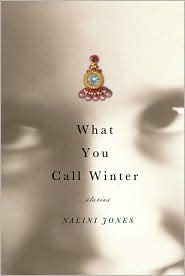Santa Clara is not Cannery Row, a place of riotous, rollicking poverty. Neither does it have the colourful middle-class preoccupations of Malgudi. But Santa Clara is where Nalini Jones has plotted Bandra. Santa Clara, Bandra as she imagines its existence in the late 50’s to the 1980s. It is a neighbourhood you would visit with pleasure. Through interconnected stories we grow to understand why people did what they did.
Marian loves her rigid, unforgiving mother Essie. Grace maybe an irritating mother-in-law but, seen through her daughter’s Colleen’s eyes, she is a figure of pathos. At the end of a harrowing day Rowena may end up climbing a tree to see the world as her adopted daughter sees it but in the afternoon she had gone to her childhood home. A trio of female relatives asleep on a narrow bed make room for her with the serenity of divine beings. At the end of that harrowing day Rowena is ready to talk to her husband again. Word by word, Jones builds a bed of compassion, easing the tight knots in our chests, resentment, fear and anger and love, everything that we have known of our families and that they unfortunately know about us. With perfectly crafted sentences Jones reminds us of family idiosyncrasies that made perfect sense then but is astonishing in retrospect. Marian Almeida is sent to practice piano to her neighbour in the afternoons but she is not to disturb the household. “She practiced her fingering in silence while the household slept. ‘It shouldn’t make a difference, how hard you thump, ‘ her mother had decided…You can just learn the shapes of songs for now.’ Jones has an excellent understanding of the inner lives of children, crediting them with wit and ambiguity. Naresh, the little boy who comes to work in the Almeidas’ household, when out at night on errands, is pleased to be one amongst the men and women with important responsibilities of their own.
Only occasionally do we wonder whether the languid air of the collection of nine stories should be attributed to Jones, the fallout of doing MFAs in American universities or the memories of being a NRI slightly dazed by the sun. But mostly one rises above such unkindness as most of Jones’ characters themselves do. One grows to care for Jones characters and hence slightly resent the limitations of short stories.
In one of Edith Wharton’s stories, the new owner of a house is told that she would only know that she had seen the resident ghost “afterwards”. Similiarly, we learn of what happens to some of the residents of the fictional neighbourhood of Santa Clara, afterwards. After reading all the stories, after sighing for Toby who longed for companionship, while flipping through another story, we find out that Toby later found someone to love. You find out afterwards in a slow percolation of gossip in a fragmenting community.
Marian loves her rigid, unforgiving mother Essie. Grace maybe an irritating mother-in-law but, seen through her daughter’s Colleen’s eyes, she is a figure of pathos. At the end of a harrowing day Rowena may end up climbing a tree to see the world as her adopted daughter sees it but in the afternoon she had gone to her childhood home. A trio of female relatives asleep on a narrow bed make room for her with the serenity of divine beings. At the end of that harrowing day Rowena is ready to talk to her husband again. Word by word, Jones builds a bed of compassion, easing the tight knots in our chests, resentment, fear and anger and love, everything that we have known of our families and that they unfortunately know about us. With perfectly crafted sentences Jones reminds us of family idiosyncrasies that made perfect sense then but is astonishing in retrospect. Marian Almeida is sent to practice piano to her neighbour in the afternoons but she is not to disturb the household. “She practiced her fingering in silence while the household slept. ‘It shouldn’t make a difference, how hard you thump, ‘ her mother had decided…You can just learn the shapes of songs for now.’ Jones has an excellent understanding of the inner lives of children, crediting them with wit and ambiguity. Naresh, the little boy who comes to work in the Almeidas’ household, when out at night on errands, is pleased to be one amongst the men and women with important responsibilities of their own.
Only occasionally do we wonder whether the languid air of the collection of nine stories should be attributed to Jones, the fallout of doing MFAs in American universities or the memories of being a NRI slightly dazed by the sun. But mostly one rises above such unkindness as most of Jones’ characters themselves do. One grows to care for Jones characters and hence slightly resent the limitations of short stories.
In one of Edith Wharton’s stories, the new owner of a house is told that she would only know that she had seen the resident ghost “afterwards”. Similiarly, we learn of what happens to some of the residents of the fictional neighbourhood of Santa Clara, afterwards. After reading all the stories, after sighing for Toby who longed for companionship, while flipping through another story, we find out that Toby later found someone to love. You find out afterwards in a slow percolation of gossip in a fragmenting community.
Labels: books
Subscribe to:
Post Comments (Atom)

0 comments:
Post a Comment